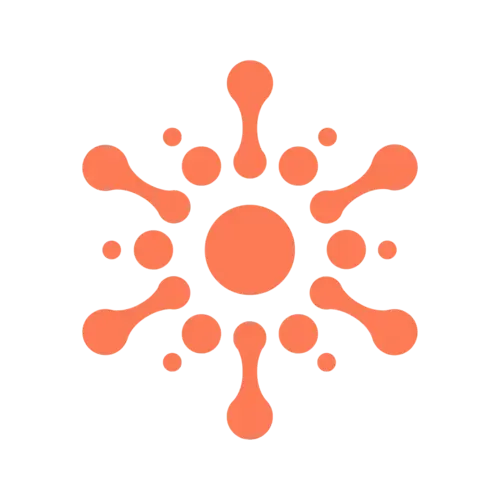Instagram Scraping - 10 Tips for Better Hashtag Research

In the beginning, Instagram was ad-free. Businesses simply needed to create great content and sprinkle a few random hashtags to attain peak levels of organic reach and engagement. How things have changed!
Now, it’s different, and using the wrong hashtags can hurt your brand. But how do you find the best hashtags for Instagram?
Comprehensive hashtag research is key for growth. This is where Instagram scraping becomes invaluable. Using an API-based scraping tool allows you to efficiently track any hashtag or set of hashtags over time.
The depth of hashtag intelligence gained through scraping enables far more effective Instagram marketing and engagement. In 2022, Instagram ranked as the second most popular social platform for marketers, with 79% leveraging it to promote their businesses.
Let’s dive into 10 tips to maximize the value of Instagram scraping for hashtag research.
Why Instagram Scraping Matters
Research shows Instagram posts with hashtags have up to 12.6% more engagement than those without. But how do you quickly collect meaningful hashtag data to use on your Instagram account? Manual collection simply doesn’t scale.
At best, you can sporadically spot-check engagement on a few hashtags occasionally. However, crucial activities like tracking competitors, identifying new opportunities, gauging campaign impact, and optimizing content are impossible without robust analytics.
Instagram scraping solves this by allowing you to pull data on any hashtag programmatically. The comprehensive visibility transforms guesswork into confident, data-driven hashtag decisions. You gain richer competitive insights that no amount of manual tracking can provide.
1: Track Specific Hashtags
Instagram scraping enables you to closely track performance of your own branded hashtags versus sporadic manual spot checks. Rather than occasionally sampling engagement, you can pull data daily or weekly through the API.
This provides metrics like impressions, reach, likes, comments, saves over time.
For example, you can monitor the hashtag #GetNiked over months to understand growth. If you run a campaign with branded hashtag #JustSwooshedIt, scraping lets you compare engagement before, during, and after promotion. You gain visibility to fine tune branded content rather than guessing if it resonates.
Scraping your own hashtags eliminates blindspots and guesswork. You gain ongoing perspective into what branded terms perform best, when audiences are most engaged, and how campaigns influence traction. These insights optimize your branded Instagram content.
2: Analyze Competitor Performance
With Instagram scraping, you can benchmark performance against competitors by tracking their branded hashtag metrics over time. Rather than occasional manual checks, you can monitor the engagement of hashtags like #JustDoIt or #SwooshLife daily through an API scraper.
Seeing the impressions, reach, likes, and comments on competitors’ branded terms helps you evaluate what type of content resonates with their followers and which strategies successfully engage their audience. You gain visibility to focus your efforts where competitors fall short.
3: Identify Trending Hashtags
Scraping emerging hashtags and memes enables you to capitalize on trends while they’re hot rather than days or weeks later when they are outdated.
An API scraping tool can track the explosive growth of viral hashtag engagements so you can jump on bandwagons early.
For example, you could have spotted the rapid rise in interest for #IceBucketChallenge or #BlackLivesMatter by scraping the engagement data as those hashtags took off. Such real-time visibility allows you to prioritize content around relevant trends in the moment versus outdated topics.
4: Compare Brand Variations
Often overlooked benefit of Instagram scraping is A/B testing of the slight variations of branded hashtags. This helps understand what resonates best with your audience.
You can track Instagram engagement metrics on #Apple versus #iPhone or #NikeRunning versus simply #Nike to guide optimization.
Rather than guessing if #Swoosh or #JustDoIt performs better, you can scrape daily likes and comments on each. This empirical data shows you the nuanced differences in traction between close branded terms so you can double down on what works.
5: See Content Gap Opportunities
Checking engagement on related but underutilized hashtags can reveal content gaps you can fill to reach new niche audiences. For example, scraping might show weaker engagement for regional hashtags like #NYCSneakerheads versus broader terms.
This presents opportunities to gain traction with targeted location-based content. Data on related hashtags guides you to pockets of untapped potential.
6: Monitor Campaigns Over Time
Scraping branded and relevant hashtags before, during, and after campaigns gauges performance and optimization opportunities.
Watching the engagement metrics over a promotion’s time frame indicates whether a hashtag is gaining momentum so you can refine messaging or creative.
Rather than flying blind, consistent data helps you track the impact of each campaign on both branded and secondary hashtags.
7: Sentiment and Comment Analysis
Scraping hashtag comments allows you to assess the qualitative reactions and attitudes beyond the quantitative metrics. Tools like Ensemble’s API gather the rich comments data so you can analyze sentiment on your branded terms or industry hashtags.
Understanding if audiences are reacting positively or negatively guides your content. You gain deeper insight from this text analysis to understand the subjective responses.
8: Location-Based Tracking
Geotagged post data scraped through the API reveals regional differences in hashtag preferences and performance. You can filter tracked hashtags by location to uncover localized trends and refine geographic targeting.
#SneakerHead performs differently in NYC versus LA. #Foodie does better in Miami than Austin. This geographic data allows location-based optimization.
9: Time Series Analysis
Scraping hashtag data over time provides time series analysis so you know when your audience is most active on Instagram. Seeing hourly, daily, and weekly posting and engagement cycles helps you post at peak times when visibility is highest.
You can align your content timing based on when key hashtags gain the most traction. Time data boosts exposure.
10: Regular API Scrapes
Rather than manual or one-off research, automate ongoing hashtag tracking with recurring API scrapes. Consistently fueling your hashtag strategy with the latest data enables continual optimization and adaptation.
The streaming insight keeps your hashtag approach current, not locked to a single snapshot. With EnsembleData, hashtag intelligence scales.
How to Scrape User Information Based on Instagram Hashtag?
Scraping user information based on hashtags on Instagram requires using an API-based scraping tool. By searching for a specific hashtag, instagram scraping can return a feed of recent posts using that tag along with the user data associated with each post.
This typically includes the username, name, bio, followers/following counts, profile image, post captions, comments, etc. This enables analyzing the types of users engaging with a hashtag by extracting their profile details, as well as assessing their attitudes based on comments.
An API scraper automates collecting this user data at scale across any hashtag, unlocking valuable audience intelligence legally. With the right platform, users and hashtags can be linked to gain insights into key communities driving conversations.
Comprehensive data through Instagram scraping provides the intelligence needed to engage audiences and outperform competitors. Stop guessing - leverage EnsembleData to start scraping key hashtag data today!

